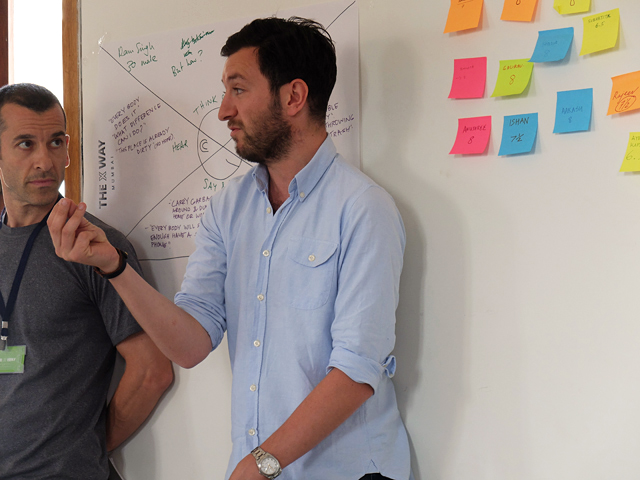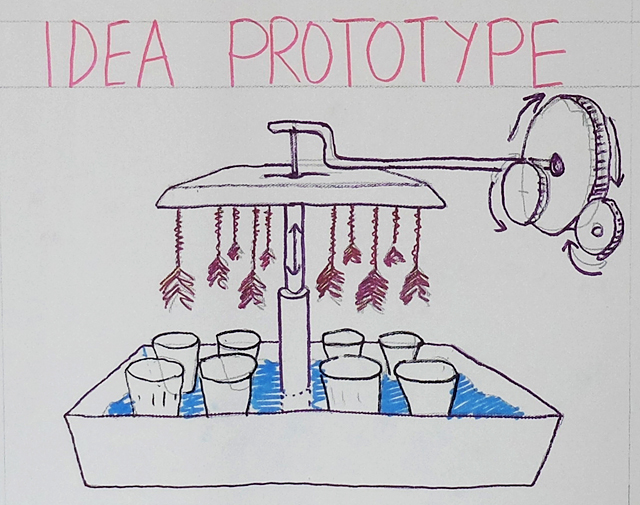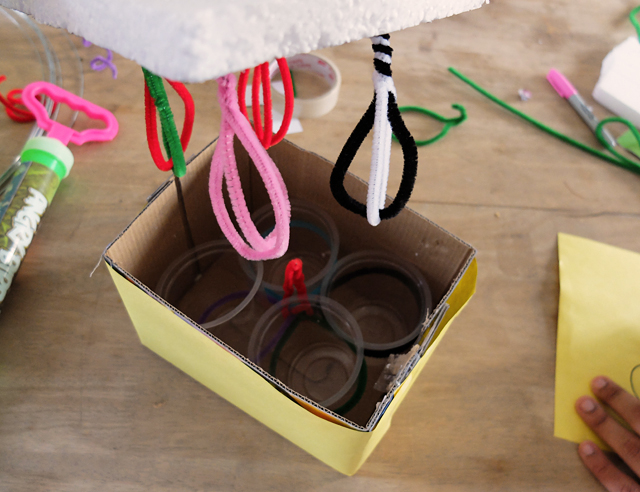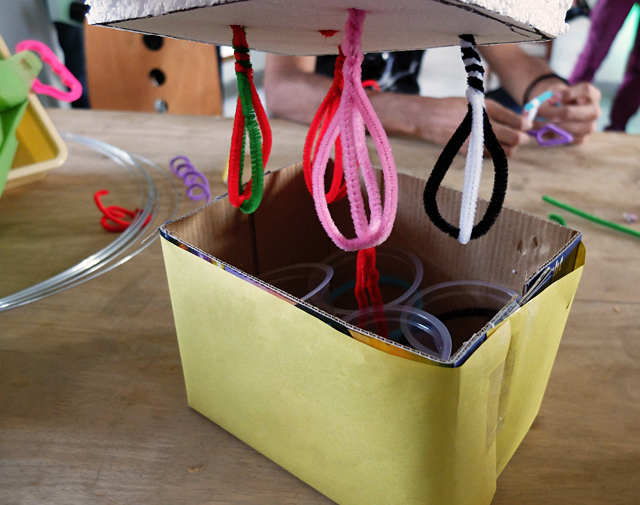Creating the Jugaad Dishwasher, The X-Way
The X-Way was a 2 day workshop sponsored by Nokia and Microsoft that focused on ideas, strategies and discussion around improving Mumbai city. Ben & Andrew moderated the workshop, keeping it challenging as twenty creatives and innovators came together with many, many city ideas.
The X-Way was a 2 day workshop sponsored by Nokia and Microsoft that focused on ideas, strategies and discussion around improving Mumbai city. Ben & Andrew moderated the workshop, keeping it challenging as twenty creatives and innovators came together with many, many city ideas.
One of the interesting exercises was listing things we love and hate about Mumbai. It was heartening to see that the 'love' pile was so much bigger despite Mumbai's numerous faults.
When discussing Mumbai's numerous problems, traffic cannot be ignored. Everything to do with traffic and way-finding is contextual. Signage is missing in a lot of places. When pedestrians give directions, the meaning may be different depending on the tone of their voice, how they stand, hand gestures and language. Honking has varied meanings depending on frequency, tones, loudness and the length of each honk. The city is a hotbed of large scale issues and topics of interest.
My team eventually looked at pavement ownership as a microcosm of health and sanitation. How could we encourage and create value in a public space such as pavement. We were in posh areas of Mumbai, and even here we found street hawkers taking ownership of pavements (in a good way) keeping them clean and ensuring their part of the pavement was maintained. Eventually we focussed even further and came up to a sugarcane vendor. Could we come up with something to help him wash the glasses in his stall while he was busy doing a million other things like making the juice, serving and cashing. A lot of times hygiene and proper washing was way down in his priorities while multi-tasking.
The final concept after two days of guerrilla research and quick prototyping was the 'jugaad dishwasher' - a mechanically automated machine that washed glasses saving the vendor time and effort as he ran a one-man operation. The washer connects to the juice machine itself so it doesn't need electricity to run. Soap is optional here since most vendors do not use soap. Overall the 'jugaad dishwasher' concept could also work for other street hawkers, juice vendors and with a few upgrades could even save time in someone's kitchen.
Check out some photos of the prototype we made. The video below has a few shots of us talking to sugarcane vendors.
The rotating juicer translates into the up and down movement of the simple washer, which repeatedly rinses the glasses. The trough can be easily refilled and cleaned and occupies minimal space.
Future Pass
"Over 100 artists, both Asian and non-, offer a kaleidoscopic panorama of a new aesthetic paradigm currently proliferating from Asia to the rest of the world. Crossing genres and disciplines as they appropriate the digital culture of the 21st century, artists working in this eclectic new aesthetic are generating new types of relationships to the globalizing world."- Excerpt from the Short Guide distributed at the exhibition. Future Pass - From Asia to the World. Collateral Event Biennale Arte 2011. June 4th - Nov. 6th 2011.
 Kaikai Kiki/Chiho Aoshima. 1974-. Little Carefree, The Chicken Girl. FRP, Lacquer. 33X20X53 cm. 2008.
Kaikai Kiki/Chiho Aoshima. 1974-. Little Carefree, The Chicken Girl. FRP, Lacquer. 33X20X53 cm. 2008.
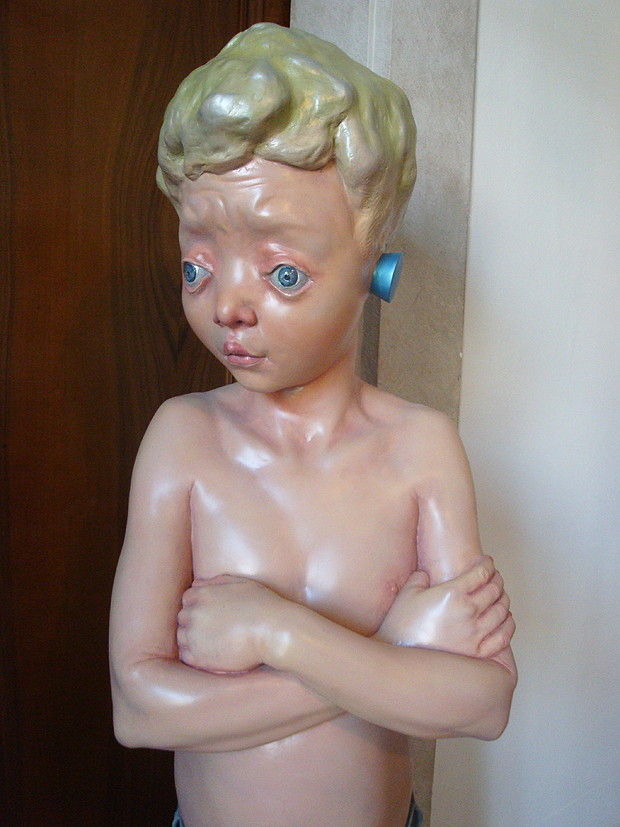 Yan Shi Lin. 1982-. What's the Matter. FiberGlass Paint. 2010.
Yan Shi Lin. 1982-. What's the Matter. FiberGlass Paint. 2010.
The word 'kaleidoscope' is an accurate description of this brilliant collection of work by a wide range of artists from across asia and the world. I spent hours here and didn't regret it for a moment (we had only 5 days to see the entire Biennale). If anyone asked me what the best thing to see in the Biennale was, it would be Future Pass. Several of the artists were also around when we visited, which made it an unforgettable experience.
 Andre Saraiva. 1971-. Mickey Wiagra. Polyester Resin, Strattee a structure - skeleton frame. 198X140X125 cm.
Andre Saraiva. 1971-. Mickey Wiagra. Polyester Resin, Strattee a structure - skeleton frame. 198X140X125 cm.
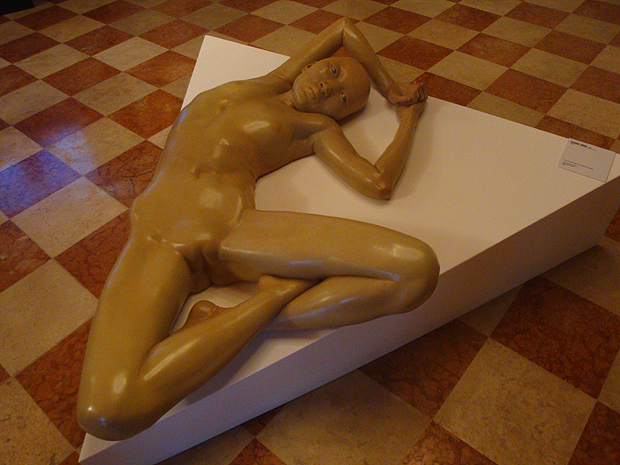 Xiang Jing. 1962-. I am 22 years old, but without my period. Fibre glass painted. 30X155X95 cm.
Xiang Jing. 1962-. I am 22 years old, but without my period. Fibre glass painted. 30X155X95 cm.
 Ward Walrath Kimball. 1914-2002. Untitled. Drawings on found posters. Sizes varied. Made in the 1960's.
Ward Walrath Kimball. 1914-2002. Untitled. Drawings on found posters. Sizes varied. Made in the 1960's.
 Victor Xu Weina. 1981-. (animamix.net). Magician. Fiberglass paint. 50X22X22 cm X3. 2009.
Victor Xu Weina. 1981-. (animamix.net). Magician. Fiberglass paint. 50X22X22 cm X3. 2009.
Kea. 1980-. A Salute to Fashion. Acrylic on Canvas. 162X130cm. 2011.
Wang Mai. 1972-. Using wisdom to capture the oil monster #12. Mixed material. 160X100X200 cm. 2011. [detail].
 Qu Yi. 1985-. Kiss Me Hard. Series of photographs.
Qu Yi. 1985-. Kiss Me Hard. Series of photographs.
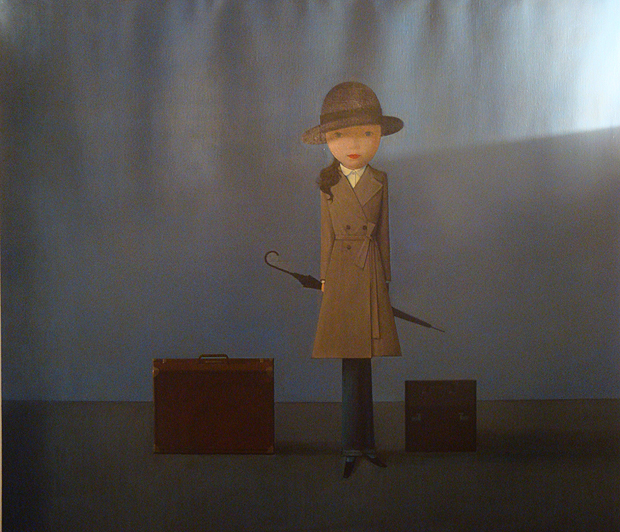 Liu Ye. Miss, 2008. Acrylic on Canvas. 140X160 cm. Private Collection.
Liu Ye. Miss, 2008. Acrylic on Canvas. 140X160 cm. Private Collection.
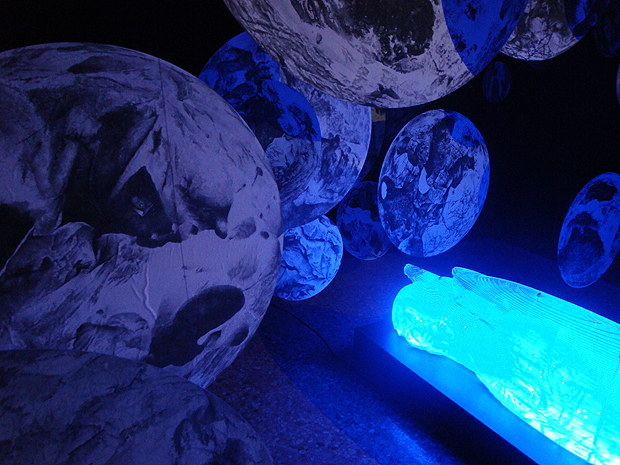 Li Hui. 1977-. Motor-Inherent Danger. Acrylics, LED Lamp, Stainless steel. 240X50X50cm. 2008.
Li Hui. 1977-. Motor-Inherent Danger. Acrylics, LED Lamp, Stainless steel. 240X50X50cm. 2008.
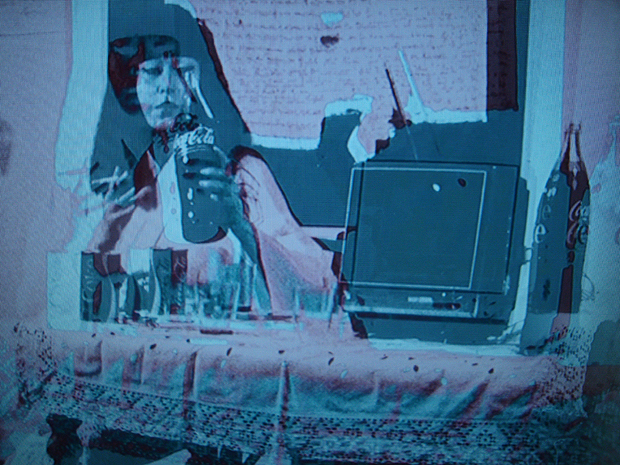 Yoko Toda. 1944-. Unknown Ideal. Video. 2009, 2011.
Yoko Toda. 1944-. Unknown Ideal. Video. 2009, 2011.
 David Chan. 1979-. Feeding the Stupid Monkey. Oil on Linen. 150X180 cm.2010.
David Chan. 1979-. Feeding the Stupid Monkey. Oil on Linen. 150X180 cm.2010.
 Cao Fei. 1978-. RMB City. Since 2009. Internet Project. RMB City is developed by Cao Fei & Vitamic Creative space. Facilitator: Uli Sigg. Courtesy of Artist and Sigg Collection.
Cao Fei. 1978-. RMB City. Since 2009. Internet Project. RMB City is developed by Cao Fei & Vitamic Creative space. Facilitator: Uli Sigg. Courtesy of Artist and Sigg Collection.
 Grimanesa Amoros. Uros Island. 414X340X66cm.
Grimanesa Amoros. Uros Island. 414X340X66cm.
Untitled Installation by Mu Lei. Video projection on a bathtub.
[Future Pass - From Asia to the World. Collateral Event Biennale Arte 2011. June 4th - Nov. 6th 2011. The UNEEC Culture and Education Foundation Taipei, The Today Art Museum of Beijing, The Wereldmuseum of Rotterdam, The National Taiwan Museum of Fine Arts, In Collaboration with the Fondazione Claudio Buziol of Venice, curated by Victoria Lu, Renzo di Renzo and Felix Schober].


